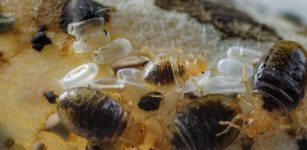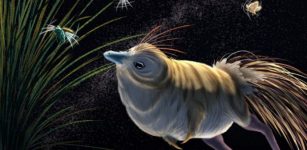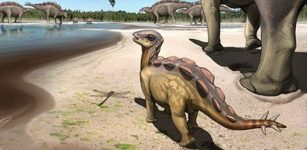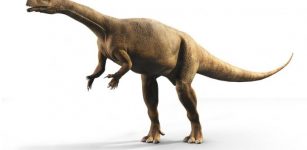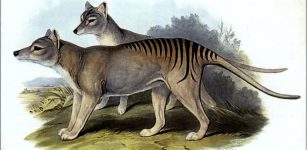New Gigantic Dinosaur Species Emitting Loud Sounds Identified By Mexican Paleontologists
Eddie Gonzales Jr. – MessageToEagle.com – A gigantic herbivorous dinosaur died 72 or 73 million years ago, in what must have been a body of water rich in sediment, so its body was quickly covered by the earth and could be preserved throughout the ages.
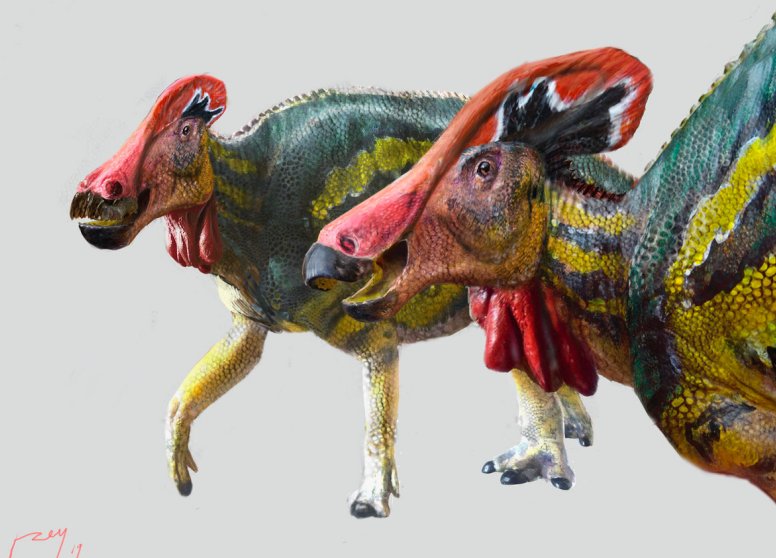 A new species of dinosaur – Tlatolophus galorum. Credit: Luis V. Rey
A new species of dinosaur – Tlatolophus galorum. Credit: Luis V. Rey
Paleontologists from the National Institute of Anthropology and History (INAH), an institution of the Ministry of Culture, and the National Autonomous University of Mexico (UNAM) were able to recover it and study.
Their research determined that the creature’s remains belong to a new species: – Tlatolophus galorum.
At first, the researchers recovered the articulated tail of a dinosaur in the Ejido Guadalupe Alamitos, municipality of General Cepeda, in Coahuila, in 2013.
“Although we had lost hope of finding the top of the specimen, once we recovered the tail we continued digging under where it was located. The surprise was that we began to find bones such as the femur, the scapula, and other elements ”, explains Ramírez Velasco.
The excavations to find other pieces of the skeleton of Tlatolophus galorum continued and eventually, the team discovered almost 80 percent of the dinosaur’s skull. Amazingly, the bone structure was found very well-preserved, and it was possible to make way for the specimen to be compared with other hadrosaur species known in the region, such as Velafrons coahuilensis.
The researcher, co-author of the academic article along with Felisa Aguilar, René Hernández Rivera, José Luis Gudiño Maussán, Marisol Lara Rodríguez and Jesús Alvarado Ortega, abounds that among these bones a very elongated and drop-shaped one appeared.
“At the time, I said that it was part of the pelvis, but another of the project participants, José López Espinoza, commented that it was the animal’s head.”
Although the initial priority was to quickly but rigorously rescue the skeleton, given that some vertebrae protruded from the surface and were exposed to rain and erosion, the clues were given, recall Felisa Aguilar Arellano, a researcher at the INAH Coahuila Center, and Ángel Alejandro Ramírez Velasco, PhD at the UNAM Institute of Geology.
It was until the subsequent collection, cleaning, and analysis of another 34 bone fragments that the pieces fit together. Paleontologists had, in effect, the crest of the dinosaur, 1.32 meters long, as well as other parts of the skull: lower and upper jaws, palate, and even the segment known as the neurocranium, where the brain was housed.
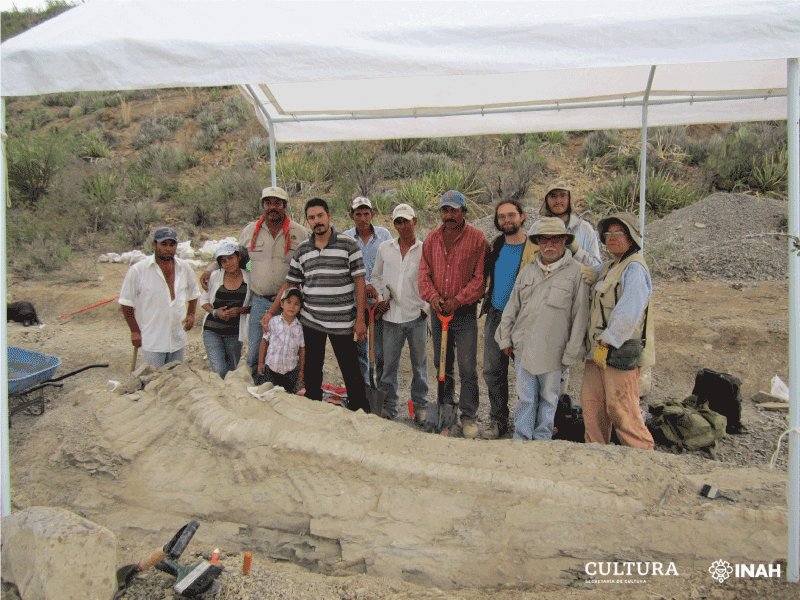 Paleontologists from INAH and UNAM identify a new dinosaur species: Tlatolophus galorum.
Paleontologists from INAH and UNAM identify a new dinosaur species: Tlatolophus galorum.
Examination showed that the crest and nose were distinct from the Velafrons and more similar to what is seen in another tribe of hadrosaurs: the parasaurolophins; the differences did not stop there: the crest of the General Cepeda specimen, shaped like a drop, was even opposed to the tubular crest of Parasaurolophus, the best-known species of the parasaurolophins, which inhabited the current territories of New Mexico and Utah, United States, as well as Alberta, Canada, and which has been portrayed in films such as Jurassic Park.
“After all these findings, we were convinced that we were looking at a new genus and species of crested dinosaur,” says Felisa Aguilar.
The research is validated by the scientific community, since, prior to its publication, each article is ruled by three specialists outside the project, who after evaluating, and where appropriate, expressing and receiving a reply to their observations, ratify the finding and allow their disclosure.
The name of Tlatolophus galorum is a multiple tribute given by researchers from INAH and UNAM. On the one hand, the genus Tlatolophus derives from the Nahua voice tlahtolli (word) and from the Greek lophus (crest), so its translation is: crest word.
The composition is appropriate not only because the crest of this animal resembles a virgula in its shape – a symbol used by Mesoamerican peoples to represent communicative action and knowledge in itself in codices – but because in all lambeosaurines it had a function communicative, since, having numerous internal passages and connections with the nose and trachea, it would function as an integrated trumpet.
“We know that they had ears with the ability to receive low-frequency sounds, so they must have been peaceful but talkative dinosaurs. Some paleontologists theorize that they emitted loud sounds to scare off carnivores or for breeding purposes, which suggests that the ridges wore bright colors, ”explains Ángel Ramírez.
“This fossil, which is still under investigation, is an exceptional case in Mexican paleontology since highly favorable events had to occur millions of years ago, when Coahuila was a tropical region, as a great coastal plain, for it to be preserved in the conditions under which we find it ”, emphasizes paleontologist Felisa Aguilar.
Written by Eddie Gonzales Jr. – MessageToEagle.com Staff




